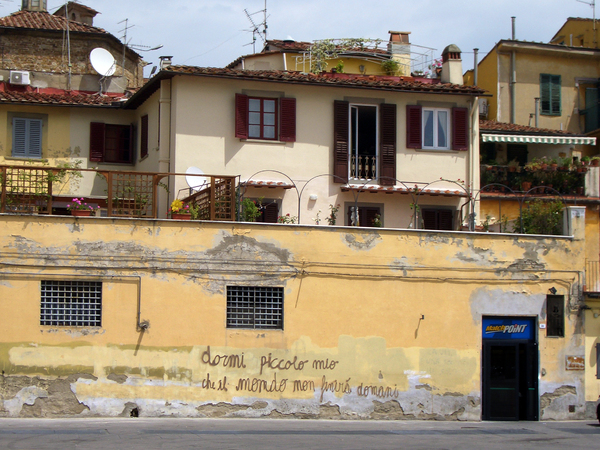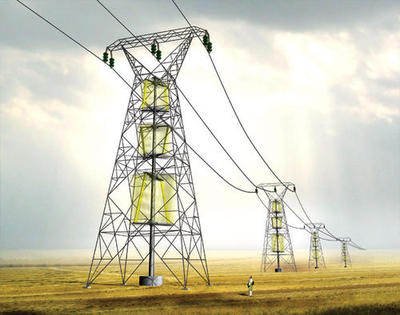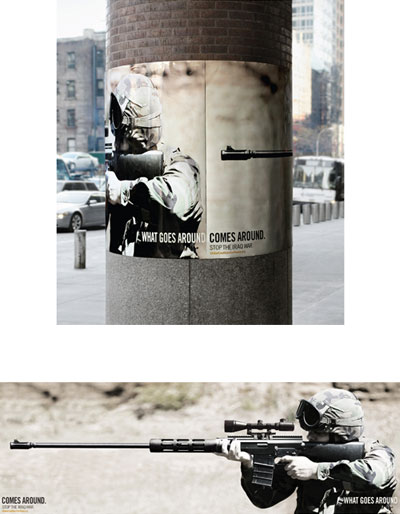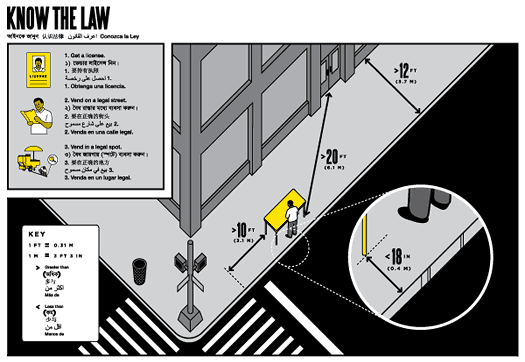May 2009
Letter to the Editor

“Sleep my little one, for the world will not end tomorrow.”
Graffito in the piazza in front of the offices of La Nazione, a popular newspaper in Florence. Based on the layers of paint on the wall, it seems graffiti is a popular feedback loop here.
I’m here for the excellent Più design può. More notes soon.
 Roger K. Lewis in The Washington Post: “The Wall Street Journal got into the game recently with a report on concepts by four architectural firms that the newspaper asked to imagine the ‘Green House of the Future.’… Speculating about visionary green houses is tantalizing, but much greater benefits accrue at a larger scale.… Focusing on hypothetical designs of free-standing houses can even be a distraction.… No matter how green individual homes are, suburban sprawl is intrinsically anti-green. It generates infrastructure inefficiency; car dependency and rising fossil fuel demand; carbon-emitting, time-wasting road congestion; and, despite availability of inexpensive land at ever-greater distances from jobs, escalating development, construction and public service costs.… Transforming neighborhoods, buildings and infrastructure to accommodate new functions may be the best way for architects and the real estate industry to help create a greener planet.”
Roger K. Lewis in The Washington Post: “The Wall Street Journal got into the game recently with a report on concepts by four architectural firms that the newspaper asked to imagine the ‘Green House of the Future.’… Speculating about visionary green houses is tantalizing, but much greater benefits accrue at a larger scale.… Focusing on hypothetical designs of free-standing houses can even be a distraction.… No matter how green individual homes are, suburban sprawl is intrinsically anti-green. It generates infrastructure inefficiency; car dependency and rising fossil fuel demand; carbon-emitting, time-wasting road congestion; and, despite availability of inexpensive land at ever-greater distances from jobs, escalating development, construction and public service costs.… Transforming neighborhoods, buildings and infrastructure to accommodate new functions may be the best way for architects and the real estate industry to help create a greener planet.”
Augmented Reality
Augmented reality is the fusion of real and virtual reality, usually projecting computer graphics over live video footage in real time. The excellent Osocio blog recently posted two advocacy projects that use augmented reality for outreach.
The first is a cellphone game that shows an animated, virtual bear colliding, falling and otherwise bumbling around the physical environment as viewed through the phone’s camera. The application is part of a campaign on biodiversity by the World Wildlife Foundation in China. The message: forests are fast disappearing, see how wildlife struggles to cope outside its habitat, the fate of wildlife is in your hand.
The other campaign creates a virtual minefield at a shopping mall in Norway to dramatize the importance of mine clearance. Pedestrians pass by a mannequin in UN de-mining gear warning that they are entering a mined area. A computer linked up to an infrared camera detects pedestrian traffic and when a special spot is crossed, speakers hit the pedestrian with the sound of an explosion. Text is then projected onto the floor in front of the pedestrian describing the impact of landmines and soliciting a donation via SMS.
However, the spots on the floor are not entirely random. Via a web site, users are put in the role of the de-mining team. Web users can see the spots of the “mines” projected onto a video of the mall. Users must click the mines to remove them before pedestrians encounter them. If they fail, web users also hear the explosion and watch the pedestrians react.
Together they raise an interesting, larger point: just how much of a visualization project non-profit advocacy and outreach itself really is. I’ve written previously about the importance of the vision thing, but I focused more on individual projects instead of the idea of advocacy generally. In many cases, it boils down to this: advocacy means making visible to an audience some aspect of reality that is off their radar or articulating some hidden reason why things are the way they are... then following up with a proposed solution. That is, projecting an augmented reality followed by a vision a different world — an alternate reality colliding with the existing one. The trick is to make these visions clear, compelling, and actionable.
What Goes Around
Clever series of cylindrical ads designed by Big Ant International for the Global Coalition for Peace. (via, via)
Vendor Power!
Candy Chang has written up an excellent overview of her process producing a visual policy brief for Making Policy Public. Street vendors in New York City can be hit with a $1,000 fine for such minor infractions as not displaying their badge prominently enough, or for not placing their cart precisely in relation to the curb or store fronts. To clarify the confusing regulations from multiple NYC agencies, the Street Vendor Project and Center for Urban Pedagogy worked with Candy to create this visual, multi-lingual fold-out poster that demystifies vendor rights and regulations (along with a few fun facts.) Check out Candy’s write-up and download a PDF of the poster. Knowing one’s rights can potentially make a big difference in the lives of street vendors and their families.
The Audacity of Hope
“Suicide bombings in Iraq since 2003 have killed thousands of people, mostly Iraqi civilians, and arguably constitute a new phenomenon in the history of warfare. Suicide bombings have been used as a tactic in other armed struggles, but their frequency and lethality in Iraq is unprecedented.” [source]
“The US military is grappling with a record number of soldier suicides. At least thirteen soldiers took their lives last month.… As many as 143 soldiers reportedly took their own lives last year.” [source]
“The true incidence of suicide among veterans is not known, according to a recent Congressional Research Service report. Based on numbers from the Centers for Disease Control and Prevention, the VA estimates that 18 veterans a day — or 6,500 a year — take their own lives, but that number includes vets from all wars.” [source]
 Marxist geographer David Harvey has been teaching Karl Marx’s Capital, Volume I each year for nearly 40 years. Now his complete course is available online as 13 two-hour video lectures. Watch them online or download the lot as a podcast. davidharvey.org has other excellent audio and video interviews with Professor Harvey about geography, class, urbanization, neoliberalism and the financial crisis, too.
Marxist geographer David Harvey has been teaching Karl Marx’s Capital, Volume I each year for nearly 40 years. Now his complete course is available online as 13 two-hour video lectures. Watch them online or download the lot as a podcast. davidharvey.org has other excellent audio and video interviews with Professor Harvey about geography, class, urbanization, neoliberalism and the financial crisis, too.



